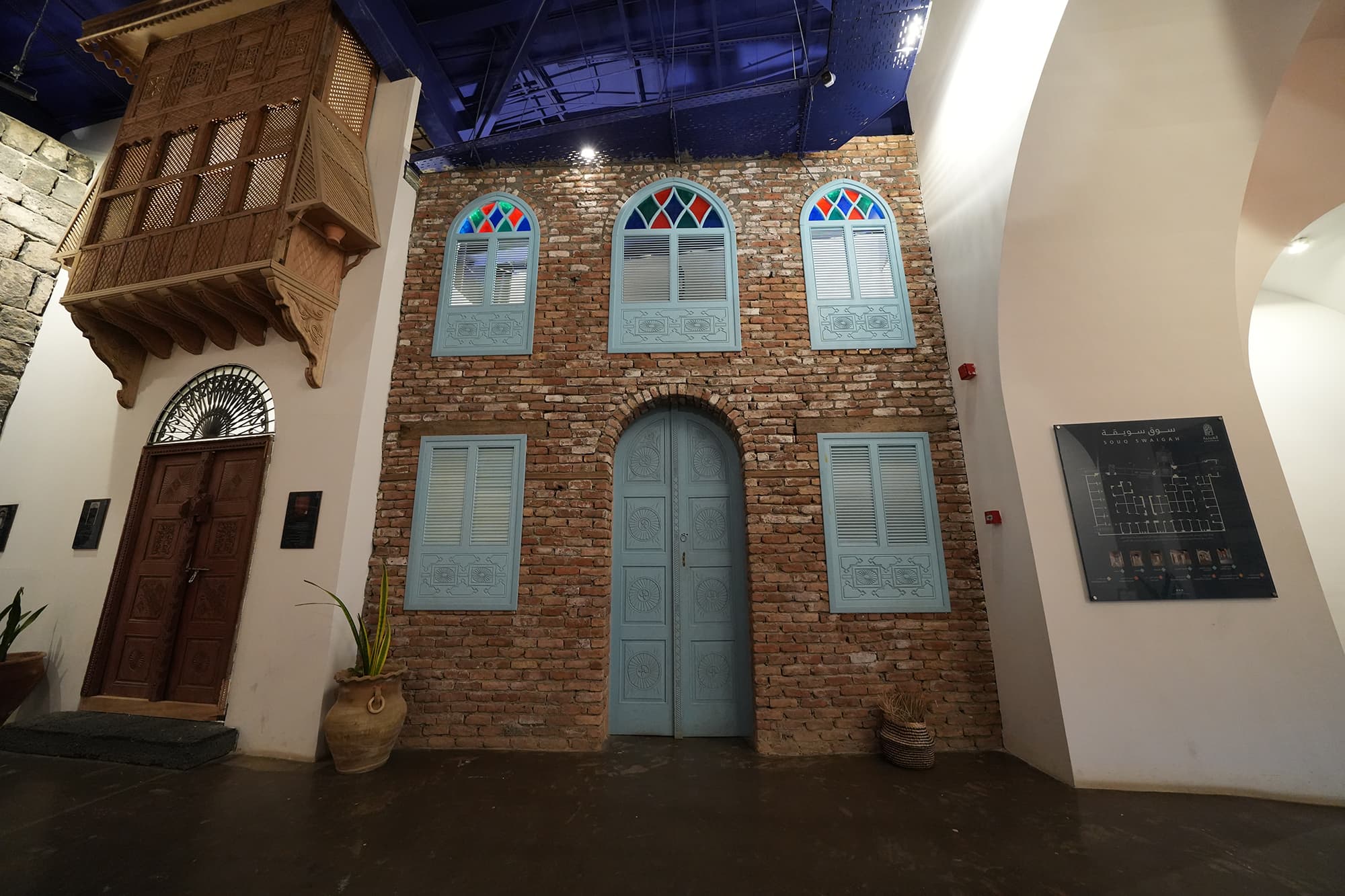Rawashin is practiced by carpenters specializing in designing specific windows. Thus, the word 'rawashin' is derived from the Persian 'rozen' (windows). In Madinah, it refers to a kind of windows designed in a distinctive and aesthetic way to decorate the facades of buildings. It shows a carpenter's skill of using wood pieces and sloping cornices.
How are Rawashin Made?
Rawashin are made of engraved wood, designed to make bay windows in the facades of buildings. Some rawashin protrude to facilitate ventilation and create space where water and pottery utensils are placed to cool drinking water and where people can sit on the protruding bench and enjoy a gush of cool air. This protruding part is called ghawlah or mashrabiyah.
Rawashin in Madinah: History and Craftsmen:
Rawashin have long been known in Madinah. They reflected the economic status of house owners as they were usually installed by the well-off. They gave rise to the emergence of an aesthetic pattern in Madinah buildings, represented by the spread of decorations and inscriptions that appeared on the crowns, balconies and bases of rawashin.
In the past, carpenters in Madinah used imported wood in making ornate rawashin, door and window shutters, and screens of balconies overlooking the street.
Official Care for the Craft:
With the spread of modern architectural designs today, rawashin are still seen in old Madinah buildings. They serve as a witness to the concepts of the urban heritage of Madinah and a reference for those interested in civil architecture. The concerned authorities in the Kingdom have shown great care to maintain and develop this heritage.
Wood products which simulate traditional architecture in Madinah can be found in Suwaiqa Market. As part of their effort to preserve the traditional craft, the authorities have organized training courses in rawashin making, at Al-Ainiya laboratories. These training programs are sponsored by the Social Development Bank and Namaa Al-Munawwarah Foundation.
